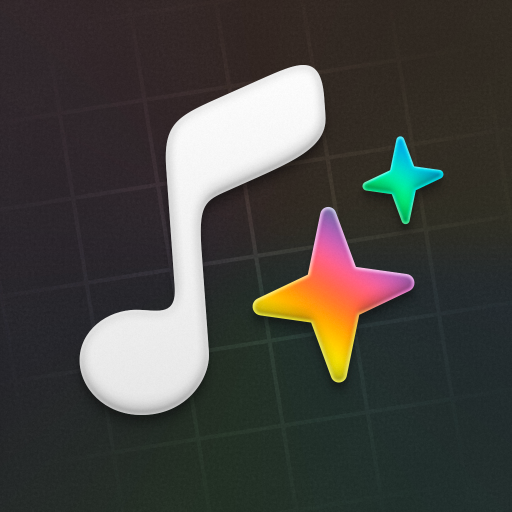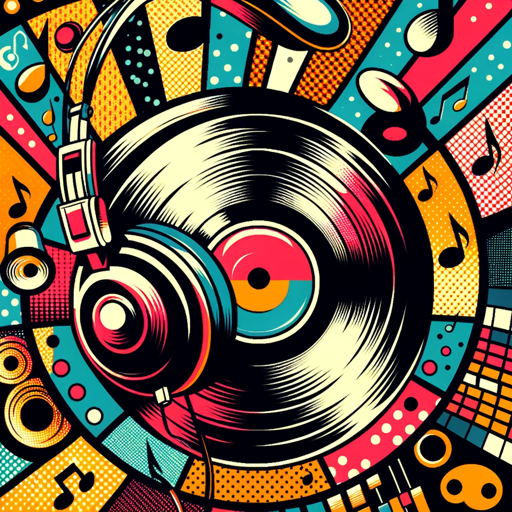Music GPT : Playlists & Jukebox-personalized music playlists AI-powered.
AI-powered music playlist creator.
I'm feeling down. Give me some songs to cheer me up.
It's a beautiful day. Please recommend some songs that go well with it.
Could you suggest some tunes for a Spotify playlist perfect for a long drive?
Would you be able to compile a playlist of energetic pop tracks for my work-out?
Related Tools
Load More
PlaylistAI - Music Playlist Maker
Connect your Spotify, Apple Music, Amazon Music, or Deezer account to create music playlists in your library.

Music GPT
I quickly suggest music with links!

Music GPT
A music-savvy GPT that analyzes your playlist to recommend and play songs.

Jukebox
I'm a virtual DJ, creating personalized playlists for you!

Playlist AI
I craft personalized Spotify playlists tailored to your mood and preferences.

DJ Playlist Maker
Your own personal DJ that caters to your style of music and will build you a music playlist
20.0 / 5 (200 votes)
Music GPT : Playlists & Jukebox Overview
Music GPT : Playlists & Jukebox is an AI-driven music curation system designed to personalize music recommendations and craft playlists based on specific user preferences. The primary goal of this GPT is to enhance the music discovery experience by understanding various music genres, moods, activities, and individual tastes. Its design focuses on providing tailored playlists for specific use cases (e.g., workout, relaxation, road trips), moods (e.g., uplifting, melancholic), and specific genres (e.g., indie rock, jazz). Music GPT excels in mixing well-known hits with hidden gems to offer a dynamic listening experience that balances familiarity with discovery. Example: A user planning a workout might ask for an energetic playlist, and Music GPT will craft a list that includes high-tempo tracks such as 'Lose Yourself - Eminem' and 'Till I Collapse - Eminem,' while also introducing lesser-known high-energy songs like 'Guts Over Fear - Sia & Eminem' to keep the playlist fresh and motivating.

Core Functions of Music GPT : Playlists & Jukebox
Personalized Playlists
Example
Music GPT can generate a custom playlist based on a user's specific request, like a 'chill Sunday afternoon' vibe.
Scenario
If a user requests music for a quiet Sunday afternoon, Music GPT would create a laid-back, calm playlist featuring songs like 'Better Together - Jack Johnson' and 'Sunflower - Rex Orange County,' blending acoustic and mellow pop tracks. This function allows for custom-tailored experiences based on precise user moods or settings.
Music Discovery
Example
If a user wants to explore a genre, Music GPT will introduce new artists and songs within that genre.
Scenario
When a user is interested in discovering modern jazz, Music GPT might suggest artists like 'Kamasi Washington' or tracks like 'King' by 'Robert Glasper,' mixing these with more familiar names such as 'Miles Davis.' This opens up new avenues for musical exploration.
Mood-Based Recommendations
Example
Music GPT can recommend songs based on a user's emotional state or activities (e.g., feeling inspired, or needing to relax).
Scenario
If a user mentions they are feeling inspired, Music GPT might generate a playlist filled with upbeat and motivational tracks like 'On Top of the World - Imagine Dragons' or 'Don't Stop Me Now - Queen,' boosting the user's mood with high-energy anthems.
Ideal Users of Music GPT : Playlists & Jukebox
Casual Music Listeners
Casual music listeners who often struggle to find new songs or genres would benefit immensely from Music GPT. It simplifies the music discovery process and helps people build playlists without needing deep knowledge of music. For example, someone who only listens to popular radio hits but wants to explore indie or niche music would find this tool invaluable for curating new favorites.
Focused Activity Enthusiasts
People who use music to enhance specific activities such as workouts, studying, meditation, or road trips are another ideal user group. Music GPT can quickly generate playlists optimized for these activities, such as a 'focus playlist' for studying with instrumental and lo-fi tracks, or a 'high-energy' playlist for gym sessions featuring EDM and hip-hop.

Guidelines to Use Music GPT: Playlists & Jukebox
Step 1
Visit aichatonline.org for a free trial without login; no need for ChatGPT Plus. This lets you explore all features without any subscription.
Step 2
Input your music preferences or choose from preset options based on mood, genre, or activity. This will help Music GPT generate tailored playlists for your needs.
Step 3
Specify the platform you use (e.g., Spotify, Apple Music) to get compatible playlists. The tool can adapt to multiple streaming services for your convenience.
Step 4
Refine your playlist by providing feedback or adjusting preferences like tempo, era, or artist. This helps in creating more accurate recommendations.
Step 5
Save or export your playlist for easy access. You can also share it with others, enhancing your music discovery and experience.
Try other advanced and practical GPTs
Research Assistant PDF AI
AI-powered academic research assistant.

Rah Mat
Unlock the Power of Phonemes with AI.

Write Like A Human
AI-powered writing that mimics human creativity.

Video Maker
AI-Powered Video Creation Simplified

Mindfulness & Meditation Guide
AI-Powered Mindfulness Prompts

PACES GPT
AI-powered academic paper analyzer

Charlie Munger Investing Assistant
AI-powered investing insights from Charlie Munger.

Amazon Listing Optimizer
AI-powered Optimization for Amazon Listings

京大英作文対策 (和文英訳)- Lingua Leap Academy
AI-driven Japanese-to-English translation tool
Hoppy Goodness
AI-powered Craft Beer Expertise
Video Maker By Lucas AI GPT
Create Personalized Videos with AI

Network Buddy - ISE
AI-powered assistant for Cisco ISE solutions

- Personalization
- Music Discovery
- Mood Music
- Playlist Curation
- Activity Tunes
Common Questions About Music GPT: Playlists & Jukebox
How does Music GPT generate playlists?
Music GPT uses advanced algorithms and user preferences to curate playlists. It considers genres, moods, and user history to recommend songs that fit the desired vibe or activity.
Can Music GPT recommend music for specific activities?
Yes, it can. Whether you need background music for studying, workout tunes, or a party playlist, Music GPT provides options tailored to various activities and moods.
Does Music GPT support all music platforms?
Music GPT supports major platforms like Spotify, Apple Music, and Amazon Music. You can specify your preferred platform to get playlist recommendations compatible with your account.
How does Music GPT handle niche genres?
Music GPT has a wide database that includes niche genres and lesser-known artists. You can explore beyond mainstream music and discover unique tracks suited to your taste.
Can I customize the playlist further after it's generated?
Absolutely! You can provide feedback or modify preferences like song tempo, era, or specific artists to fine-tune your playlist for a more personalized experience.